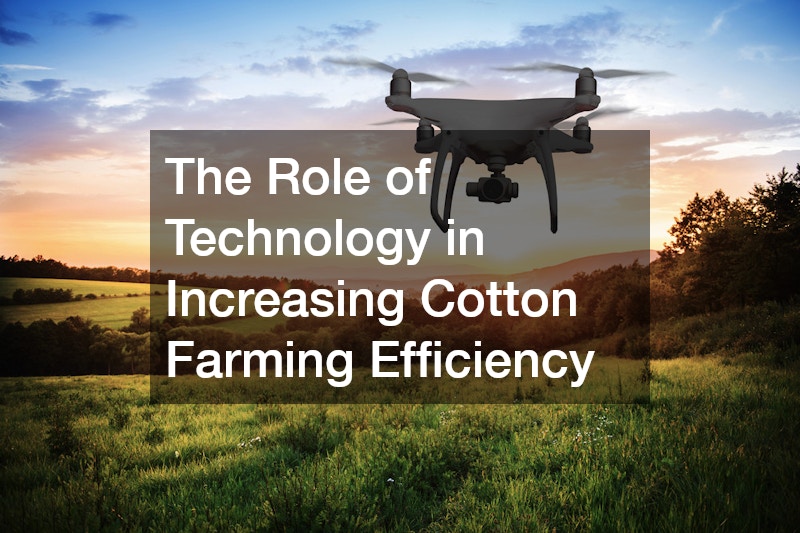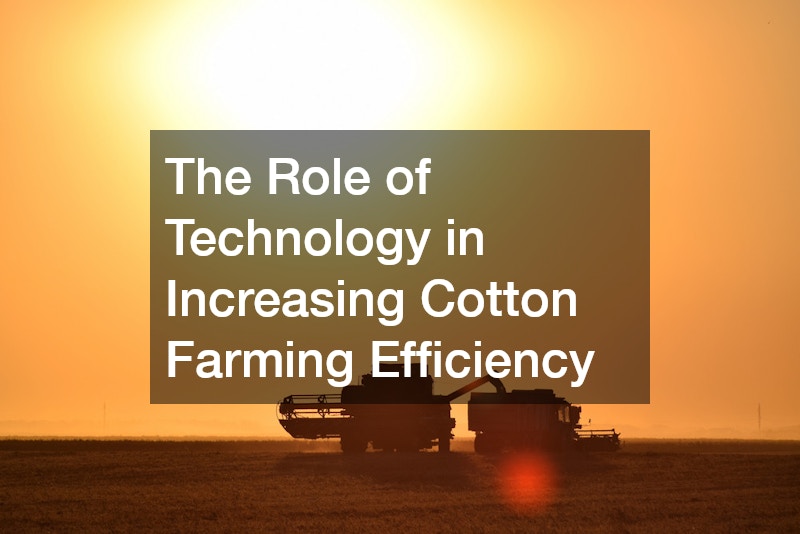
of Technology in Increasing Cotton Farming Efficiency
Introduction
Cotton remains an essential global commodity, deeply intertwined with the fabric of modern society—not just as a material for clothing but as a pillar in the agricultural economy of several nations. The need for sustainable and efficient farming practices has never been more critical, as environmental concerns and rising demands challenge the agricultural sector. Technological advancements are playing a pivotal role in revolutionizing cotton farming, turning traditional methods into cutting-edge agricultural practices, thereby significantly increasing efficiency.
The embrace of technology in cotton farming is setting a benchmark for what is possible in agricultural efficiency and sustainability. With cotton being a crop of significant economic import, especially for countries like India, China, and the United States, incorporating technology-based solutions becomes essential. These include precision agriculture, genetic modification, artificial intelligence, and data analytics, all working in tandem to address the challenges posed by climate change, resource scarcity, and a growing global population.
As we delve into the specifics of how these technological innovations are being applied, we will explore their impact not just on yield and efficiency, but on the overall sustainability of cotton farming practices. These technologies offer promise not only in boosting productivity but also in reducing environmental footprints, thus aligning with a future-oriented model of agricultural development.
How is Precision Agriculture Enhancing Cotton Farming?
Understanding Precision Agriculture
Precision agriculture represents a farming management concept that leverages technology to observe, measure, and respond to field variability in crops. In cotton farming, this approach involves using GPS technology to improve the accuracy of planting, fertilizing, and harvesting processes. By using detailed maps and geographical data, farmers can optimize field-level management regarding crop farming.
Drones play a vital role in this technological ecosystem, providing aerial views of cotton fields that are crucial for monitoring plant health, growth stages, and identifying stress levels such as nutrient deficiencies or pest invasions. These unmanned aerial vehicles (UAVs) can cover large areas quickly, offering real-time data that help farmers make informed decisions that maximize yield and quality.
Moreover, the Internet of Things (IoT) devices provide continual data via sensors placed in the fields. These devices measure soil moisture levels, weather conditions, and other environmental factors. This constant flow of information allows farmers to implement irrigation strategies more efficiently, applying water only where it is necessary and conserving resources while ensuring that the cotton plants receive the optimum amount of hydration for robust growth.
What Impact does Genetic Modification have on Cotton Yield?
Genetic Modification Techniques
Genetic modification (GM) has become a cornerstone in efforts to increase cotton yield and resilience. Through biotechnology, scientists have developed cotton strains that are resistant to pests such as the bollworm, leading to a decrease in the need for chemical pesticides. This not only lowers production costs but also minimizes the environmental impact of chemical use.
Furthermore, GM cotton is engineered to be more adaptable to varying climate conditions, addressing one of the most significant challenges facing agriculture today. As climates around the globe become more unpredictable, such modifications ensure that cotton plants can survive and thrive in adverse weather, thereby securing farmers’ livelihoods and ensuring a stable supply of this essential crop.
An additional benefit of genetic modification is the creation of cotton variations that require fewer resources, such as water and fertilizers, to grow effectively. This characteristic is crucial in the face of increasing water scarcity and the rising costs of agricultural inputs, offering a more sustainable path for cotton production.
How are Artificial Intelligence and Data Analytics Transforming Cotton Farming?
Role of AI and Data in Farming
Artificial intelligence (AI) and data analytics serve as transformative tools in modern cotton farming, helping to streamline production processes and enhance decision-making. AI technologies enable the analysis of large datasets to predict factors such as weather patterns, potential pest outbreaks, and crop diseases, allowing farmers to act proactively rather than reactively.
Machine learning models apply AI to refine predictions and recommendations over time, continuously improving the accuracy of data interpretation and resource allocation. This efficiency minimizes waste and maximizes yield, ensuring that each area of the cotton field receives precisely what it needs for optimal growth and productivity.
Data analytics provide deep insights into farming operations, guiding strategic decisions that can lead to cost reductions and enhanced profitability. By utilizing predictive analytics, farmers can forecast market trends and consumer demands, aligning their cotton output to market needs, thus optimizing their economic returns.
Conclusion
The fusion of technological advancements with cotton farming practices illustrates a promising trajectory towards heightened efficiency and sustainability. Precision agriculture, genetic modifications, and AI-powered analytics collectively redefine how cotton is cultivated, ultimately driving sustainability and profitability.
While challenges remain, the integration of these technologies mitigates risks associated with climate change, resource scarcity, and rising global demands. By embracing these innovations, the cotton farming industry stands poised to lead agricultural practices into a new era of efficiency and environmental responsibility.
Looking to the future, the continuous evolution of technology promises even greater strides in farming practices, with potential applications yet untapped. As these technologies mature and evolve, the vision of truly sustainable, efficient, and profitable cotton farming inches ever closer to reality, underscoring agriculture’s pivotal role in a sustainable future.





